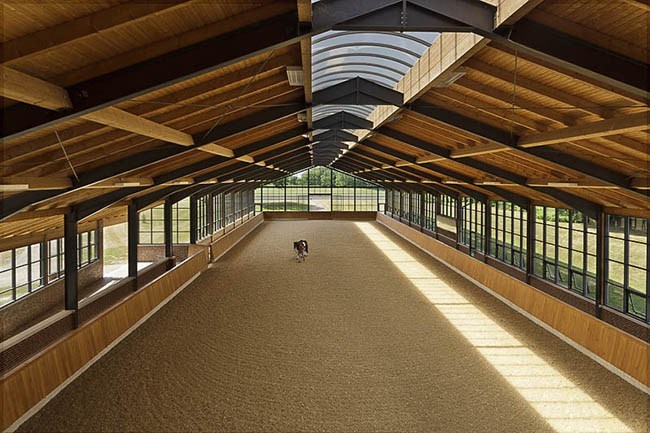The decision of the Upper Tribunal (Lands Chamber) in Corkish (VO) v Bigwood (2019) UKUT 0191 (LC) offers important, and helpful, guidance on the question of the dividing line between domestic and non-domestic property for the purposes of either, Council Tax, or non-domestic rates, respectively.
The appeal concerned equestrian premises at Bourne Hill House near Horsham, Sussex, an estate covering 150 acres and occupied by Fiona Bigwood, a prominent equestrian competitor, and her family. In addition to the house itself, the estate included 28 stables and a substantial indoor dressage arena, and other equestrian facilities. The valuation officer considered that these parts of the property represented a separate non-domestic hereditament and entered them in the rating list as “stables and premises” with a rateable value of £30,000. The appellant ratepayer appealed against this entry in the rating list and that appeal was heard by the President of the Valuation Tribunal for England (VTE), who determined that the equestrian facilities should be deleted from the non-domestic rating list on the grounds that they were domestic, rather than non-domestic, property. The valuation officer appealed against that decision to the Upper Tribunal (Lands Chamber).
The Upper Tribunal’s decision sets out the legislative background which makes clear that domestic property includes any “yard, garden, outhouse or other appurtenance belonging to or enjoyed with” living accommodation.
The first question for the Upper Tribunal was whether the appellant’s proposal to alter the non-domestic rating list, which was made against the rateable value set by the valuation officer, was apt to include a challenge as to whether the property concerned should be included in the non-domestic rating list at all. The Tribunal took the view that, in the circumstances of the case, the distinction between deletion of rateable value, and reduction to a nominal figure of rateable value £1, was insignificant. The real issue was whether the equestrian facilities were domestic property, and therefore not rateable, or were non-domestic property, falling to be rated.
The issues addressed by the parties before the Tribunal were whether the equestrian facilities fell within the curtilage of Bourne Hill house, and, if they did, whether they were prevented from being appurtenances to the house by virtue of being non-domestic property, and whether the use of the equestrian facilities was domestic or non-domestic.
The Tribunal’s decision includes a thorough review of determined cases relating to the question of “appurtenances”. The appellant valuation officer contended that the size of the facilities was relevant to determining whether or not they were appurtenant to the house, and that the scale of them suggested that they were not. The valuation officer also contended that these represented an entirely stand-alone facility.
The valuation officer further contended that, even if the equestrian facilities were within the curtilage of the house, they should not be treated as appurtenant to it the use made of them was “essentially non-domestic”.
The Tribunal considered that there was no rule that stated that a large building cannot be appurtenant to a smaller building. Nor could the equestrian facilities be said to be an entirely stand-alone facility, they shared both access and facilities, such as services, with the house. The Tribunal was satisfied that the equestrian facilities were appurtenant to the house because there was no physical barrier between the two, and the visual impression was that of a single group of buildings. The use of the equestrian facilities was by the owners of the house and their family and the planning consent did not allow use for commercial purposes. The Tribunal considered that there was no basis to treat the equestrian facilities as being used for non-domestic purposes, because they were used by the householder as an adjunct to their home, and not for non-domestic purposes.
The Tribunal was satisfied that the VTE’s decision was a correct one, and dismissed the valuation officer’s appeal.
The consideration by the Tribunal of the application of the concepts of curtilage and appurtenance will, no doubt, be of particular interest to lawyers. For practising rating valuers, the key element of the Upper Tribunal’s decision appears to be that the question of whether something is appurtenant to a domestic property is best considered by reviewing whether it is used and enjoyed with the domestic property, rather than by its size or scale in relation to the domestic property.

